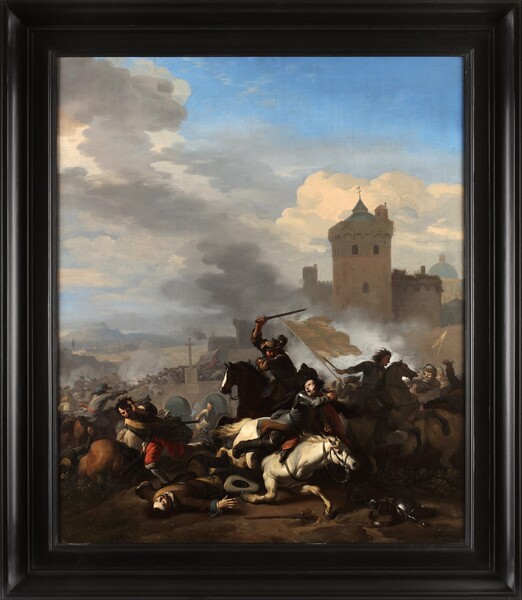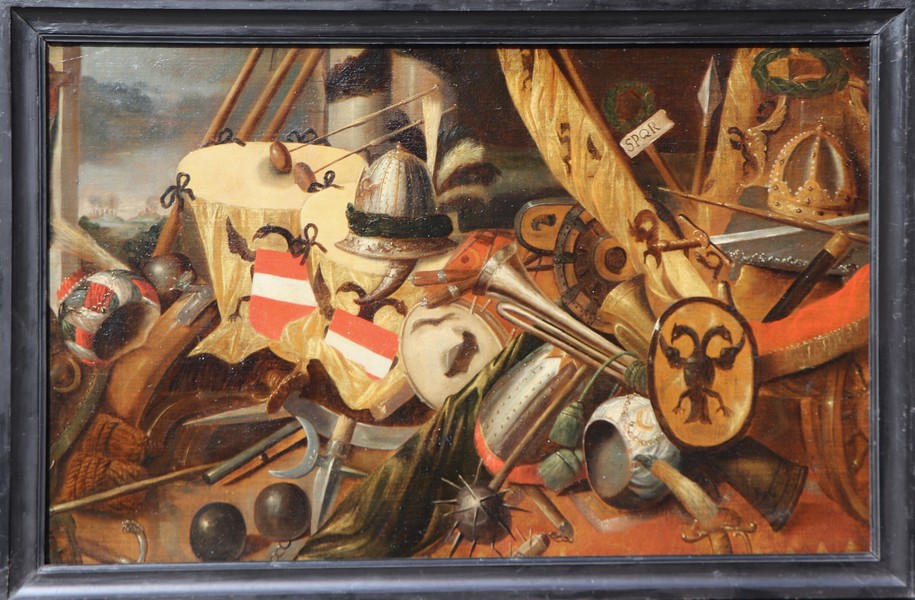
Jan van Huchtenburg
"Kuruc rebels fighting against an Austrian Habsburg army "
12.500 €
"Kuruc rebels fighting against an Austrian Habsburg army "
12.500 €
Jan Martsen de Jonge
"A battle scene"
3.000 €
"A battle scene"
3.000 €
Pieter Meulener
"A cavalry battle scene"
6.400 €
"A cavalry battle scene"
6.400 €
Palamedes I Palamedesz.
"A cavalry battle scene"
8.300 €
"A cavalry battle scene"
8.300 €
Willem Schellinks
"Dutch soldiers plundering and burning down a church"
8.500 €
"Dutch soldiers plundering and burning down a church"
8.500 €
Jan Jacobsz. van der Stoffe
"One of a pair of cavalry battle scenes"
the pair 16.000 €
"One of a pair of cavalry battle scenes"
the pair 16.000 €
Jan Jacobsz. van der Stoffe
"One of a pair of cavalry battle scenes"
the pair 16.000 €
"One of a pair of cavalry battle scenes"
the pair 16.000 €

Unidentified late 17th century painter
"A military still life commemorating the Turkish defeat at the Battle of Vienna in 1683"
17.000 €
"A military still life commemorating the Turkish defeat at the Battle of Vienna in 1683"
17.000 €
